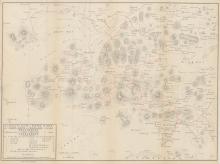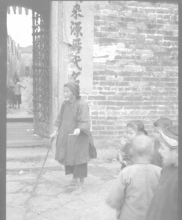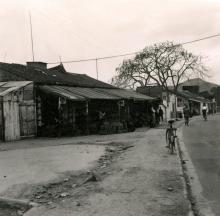Kat Hing Wai, aka "Kam Tin walled village" [????- ]
Primary tabs
Submitted by Admin on Sun, 2009-01-04 21:34
Current condition:
In use
A well-known walled village in the New Territories. The HKTB website has some more information.
Tags:





Comments
Kam Tin walled villages
Looking at the 1952 map on Gwulo, I see that there were still definitely three moated and walled villages in Kam Tin, the one we all know on the South side of the main road with two more on the North side of the road. On Google Earth it is still possible to make out the shapes of both the Northern ones, and there might even be a hint of the moat on the Westernmost one. I have never been to either of these two so do not know whether the old village walls still exist.
I had always thought that Kam Tin was inhabited by one clan. If that was the case, why didn't they build one wall around all the houses? Is it because as the clan's population grew larger they built more walled villages close together? In that case which is the oldest of the three walled villages? Or, did some of the families within the clan not get on with each other and wanted their own walls? I tend to favour the growing population idea.
Has anyone got answers? Thanks. Andrew
No specific answers for you
No specific answers for you but some ideas for how to find out more. One thing to note first is that the term "clan" usually just refers to everyone with the same surname who descends from a single common ancestor so each Chinese clan is huge. You could have communities of people spread across the country (and today even the world!) who are technically all part of the same clan. There were other villages/groups of villages in Hong Kong inhabited by Tang people descended from the same ancestor as the Kam Tin settlers so they would all be part of the same clan even if they didn't really have any association with each other.
I found this (very long) thesis paper on "An Historical Geography of the Walled Villages of Hong Kong" that might be interesting. You need to enter your email address to access it but it's free to read. It talks about a lot of different walled villages in Hong Kong, including those in Kam Tin. The thesis also actually lists four villages in that area: Wing Lung Wai, Tai Hong Wai (both are on the 1952 map), Kat Hing Wai, and Kam Hing Wai. It doesn't answer your question specifically, but it does discuss in a general sense how walled villages often ended up grouped together into a township or "heung" like Kam Tin. The most relevant part is Chapter 6. However, from what I gather, both your guesses of population growth and community disputes are plausible reasons for multiple villages. I think the one thing we can really determine is that each walled village in Kam Tin was most likely inhabited by a separate branch of the Tang clan and all these branches were probably closely related to each other (vs. Tang people in villages in other parts of HK) but the specifics of these relationships aren't mentioned in this paper. Maybe each village was headed up by a different brother of the same family or something like that.
So where to go from here? I guess one way to find out more would be to go to the village (or hire a geneaologist) and ask around. Hopefully there are some family stories that have been passed down and someone still living there knows the reason! Other than that, you'd probably have to track down the family genealogies for the villages to actually figure out those details and it would definitely take some digging. A village's ancestral hall should have a family geneaology book, called a jiapu (族譜), that lists all the male descendents in a village. Sometimes you can get lucky and find scans of jiapus in university archives or geneaology databases but either way, you'll need to be able to read Chinese to go through it. If you find that, you might be able to determine when/why the village split into other branches. They're usually just pages of names of all the male descendents in a village so it'd be a bit of a slog to go through and there's no guarantee that it would even provide an explanation for the different villages, but you never know! I did a quick search and I think there are a few for different branches of the Tang clan in HK but I'm not sure if any are specific to the Kam Tin villages and I'm not at all familiar with jiapus to know if they'd have any relevant info. Perhaps someone who is more knowledgeable in Chinese geneaology research can find out more!
Thank you Kimmy for your very
Thank you Kimmy for your very interesting comment and for providing the link to the thesis. I have quickly looked through it this morning and it does seem to answer the questions that I raised - growing populations meant more walled villages were required within the clans and that each new walled village was likely to have been built and occupied by a growing family within the clan. I hadn't realised that there had been so many walled villages in the New Territories or that, over the border, walled villages of a different shape (a round wall similar to the bull-fighting arenas of Spain) were widespread. The thesis also confirms that the well-known Kat Hing Wai walled village to the south of the road in Kam Tin was part of the Punti clan. I was not able to check out the other walled villages in Kam Tin, but I suspect that all three were Punti. I think that the thesis states that ancestral halls were not always built inside the walled village. This perhaps explains why in 2006 I came across an ancestral hall a hundred metres or so to the East of Kat Hing Wai. Regards Andrew